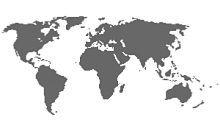
Canadian investors, even those with a strong preference for domestic equities, can boost risk-adjusted returns by diversifying into global stocks, new research finds.
New York-based S&P Dow Jones Indices published a report on Monday examining how sector concentration in the Canadian equity market poses challenges for Canadian investors.
Specifically, the Canadian market is heavily dependent on the materials, energy and financials sectors, which represent approximately 75% of the market; this compares with just one-third of the global market, and just 27.4% of the U.S. market, the S&P Dow Jones Indices report notes.
The Canadian market is also heavily concentrated in the country’s biggest stocks, the report adds. The top 10 components of the S&P/TSX composite index account for almost 36.2% of the index, more than double the 17.1% represented by the top 10 companies in the S&P 500 composite index, the report states. In contrast, the top 10 companies in the S&P global 1200 make up only 9.8% of that index.
This heavy concentration, both in terms of sectors and individual stocks, makes it difficult for Canadian investors to diversify their equities exposure purely by investing in domestic equities, the report notes.
“The absence of sufficient sector and stock diversification in the Canadian market has investment implications for Canadian investors with domestic equity allocations that are in line with the benchmark sector exposures,” the report says. “With the benchmark returns driven primarily by the returns of those three sectors, Canadian investors are subject to the peak and trough in the commodity and energy price cycles.”
At the same time, investors who limit themselves to the Canadian market may be missing out on incremental returns. For example, health care has been the best-performing sector over the past five years, generating more than 484.6% in cumulative returns, the report says. However, as the sector has just a 1.95% weight in the Canadian index, it contributed just 3.91% to the benchmark’s total return over that period.
The heavyweight energy sector was responsible for a similar overall return contribution (3.55%), despite returning just 9.7% cumulatively over the same period, given that it represented 25.9% of the index on average.
“Canadian investors can become more risk-efficient by diversifying beyond their domestic allocations,” the report concludes.
To test the hypothesis, S&P Dow Jones Indices has created four hypothetical portfolios to examine the impact of global diversification on risk-adjusted returns. The results suggest an allocation of 75% or less to the domestic market, with the rest allocated to international equities, “may potentially earn higher returns with lower volatility regardless of the investment horizon.”
Even investors with a strong preference for domestic equities can earn higher risk-adjusted returns by maintaining a relatively high allocation to Canadian equities and allocating the remaining portion to global equities, the report notes.
“The results demonstrate that historically, investors who have had a strong home-bias have managed to earn higher risk-adjusted returns by incrementally increasing exposure to international equities,” the report concludes.